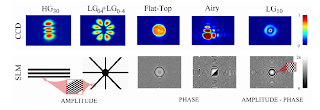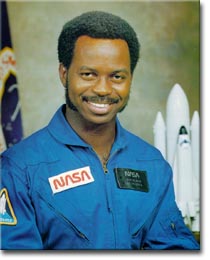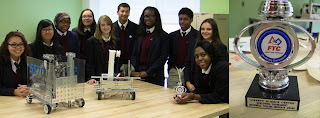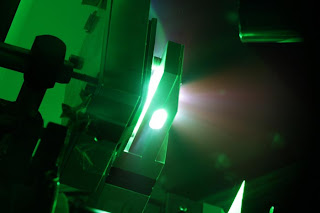Afro-Futuristic Vision #33 - Say Goodbye to Miss Laura – Django Unchained
Why do I always do things after all the hoopla and hype has everyone plugged in when they should be giving all their energy to early day physical exercises and spiritual work. I don’t know. Could be that when anyone jumps on a trend I look to go the opposite direction.
DJANGO UNCHAINED – SHANGO UNCHAINED
Quentin Tarratino’s film style has always been interesting to me, a homage to the old 42nd Street Movie theatres that showed 3-4 Kung-Fu Features and Street Vigilante Flicks while thick billowy clouds of Marijuana entered the lungs of the old and young. Who can say, if most attendees actually enjoyed these flicks or were just zoning in another world.
Quentin always had an interesting way of casting unsuspecting individuals who eventually take the lead in the course of the movie. Django was no different.
You can tell that he would eventually go the Western route since his cameo appearance in Sukiyaki Western Django, which was directed by Takashi Miike. Quentin played Piringo who ‘edifies a group of bandits about an old rivalry between two bitter Japanese clans, before dispatching the bandits in a brief, but violent shootout.’ http://www.metacafe.com/watch/mv-nvyQc/sukiyaki_western_django_piringos_story/
My review of Django will be based solely on my perspective as an Afro-Futurist (who is somewhat reclusive) and views the world from a dynamic of Tao and Nubian principles of energy progression. Keeping in mind, that Tarratino can only produce films from his own point of view on life and cannot be held responsible to give a full accurate perspective of our world. Although, I thought Django was very close to my AF standards.
While a majority of movie-goers were outraged with the racial slurs and epithets within the movie, there was not a surge of abandoning any form of current activity which may reflect what Europeans have labeled as slavery. Folks still went to Whole-Foods, Mickey D’s, Duane Reade, called themselves Vegan or Vegetarian, used I-Phones, voted, downloaded on Kindle, watched YouTube and more importantly watch the modern form of Mandigo Fighting (Football, Basketball and so forth). There was no dramatic drop in sports gambling, purchase of merchandise/ paraphernalia and tailgate parties.
No one abandoned the American Way of Life over the 100x Nigger was called out in Django, which would have been a bigger testament to opposing the use of the word. Nor was there a sudden increase in sales and downloads of Spike Lee’s Movies since he was the one that really bought it to our attention.
But hey, External Science is a helluva drug….
Now we got that out the way, Django…
Opening images of men in bondage walking on a chain-gang through all manner of weather. Powerful image. Since most of the world is genetically mixing in with each other physically and language-wise. We are currently in an age where that time in the Life-Story of Europeans and respectively Afrikans/Nubians, has been wiped out with elections and over-the-top episodes of Family Guy. But for me, the image of Django and the men walking in bondage, caused me to recognize that we never went through Slavery. At least not according to our own words. We were and still are used to refine mental and physical commodities by a group of individuals whose spiritual maturity is lacking. And somewhere along the line we believed and adapted the word, slavery, that was used by these individuals to describe our experience. SLAVERY IS THEIR TERMINOLOGY.
I don’t know how you watch a film, but I always watch a film as it relates to me as DjaDja, my culture and my place in this universe. I do not look for politics, economics, pop-culture or any of the other things that fill this Life-Bubble with random expressions of bottled repressed energy.
At this point, watching the film became an experience of my senses and AF reasoning plugged into the experience of Django. Most of the dialogue at this point was at a minimum and when we did here a voice, it was from one of the ‘slavers’, and his energy immediately opened the theme for others characters who shared his views…that energy being ignorance. It allowed us to see into the mentality of those certain people at that time period. At this point, it would appear that the men in captivity were surrounded by alien beings who knew little to nothing about the spirit of the land around them and less about the function of language and its overall energy. With the exception of Dr. Schultz, every time a European in this movie spoke, it came from the space of a very warlike energy; regardless if the manner of speech was with eloquent words and mannerism.
When Django was given the opportunity for mercenary work, he accepted as a way out of his current plight. Mercenary work is an age-old career, however, it may have been under different names dependant on the culture, the underlying energy of it is still the same. Django’s ‘freedom’ was accomplished by barter and trade hastened by the blood splattering of horse and man alike.Django tosses off the clothes of what the Europeans called Slavery; almost naked true to his essence for a split second. The most real and connected a man can be. Once the paperwork was accomplished, Django took the clothes of one of the men who held him in bondage since that man’s contract with this world was rapidly expired by Dr. Shultz’ gun. Taking of the clothes can be seen as taking on the identity in rouse while remaining true to oneself. It you noticed, the wind special-effect chimed in when Django removed his rags, the wind representing Shango…this was the time of Django’s transformation within the night-air, receiving Shango.
Throughout the movie, all 2 hours and 45 minutes of it, we are given over to unsanitary conditions, not so much in dealing with the Nubians in bondage, but more so within the world of Europeans living in this area of the world. Although dressed with frou frou material possessions, we get an undercurrent feeling of stench and uncleanliness.
I will not speak for others, nor force my opinions on them, but for me, clearly two worlds were running parallel, one of European Slavery Concept and the other of Django view of being thrust into a world of treachery, greed and lust. Too often, a film is based on the views of a Euro-centric nature when dealing with African-Americans (Afrikan/Nubian Descendents/Ascendents) storylines, although this was no exception…it was. In my opinion, saying that we were slaves is taking on the European view to explain our condition, rather than just using the Euro-Verb ‘Enslavement’ the actual action and not the word ‘Slave’ which is the identity.
As things progressed, it was apparent that the true savages were those who used the word Nigger like a second breath, or maybe that was the point…to be like the Nigger they could never be…
It is interesting that even German, Dr. King Schultz, was offended by his slack-jawed country backward cousins. Possibly his role represents the Europeans looking to remove themselves from that mentality or maybe they are just playing along…
I can go on and on about all the metaphysical symbolism and the cast of spells throughout the film but I won’t...
I will however, point out the areas that were of particular interest to me.
Clothing – Django’s clothing constantly evolved through the course of film. From rags to the powder blue satin colonial Mason suit to the rugged western land baron suit. Not only did the material change but it also reflected his attitude. While remaining true to his mission and his essence, the uniform changed in order to infiltrate and be taken seriously (in the context of how one expresses oneself for clarity as well as maintaining one’s camouflage—not for the purpose of changing someone’s mind so that they will respect you). At the end, his attire was well-managed and orderly, this reflected his ability to master the language of the people in this land as well as their mannerisms and customs...still remaining true to himself.
Finally at the end of the film, we see Django dressed in the colors of Shango and his mannerism enhanced by the spirit that dwells within him. “I didn’t know Burgundy was my color.”
Whipping – By far, the whipping scene was so realistic to me. If you are going to submit your torturer to the same hostility he imposed on you and there is no one with a sutra or Buddha chant around…by all means…make sure to put your whole body into it and get out all your frustration…purify your liver and toss the whip like a mic at the end of it. Make sure to spread your fingers of your free hand for balance and supreme cocking mechanism. Do not think of Indy at all. Do it right next to the tree that your brethren were whipped on and change the course of energy for that area. This scene reminded me of the Nasuwt (Ruler) Narmer from Kemet (Egypt) when he took the heads of the Hyksos/Haribus. Also, the scene seemed to symbolize the taking back of sacred teachings that’s been coveted by certain groups…the reclaiming of self from self. Dressed in a colonial suit and whipping on the colonizer shows a role reversal. One can only be a servant by giving yourself over. Towards the end of this scene we clearly see the Ka position (which is the position of the spiritual self and the utilization of space for creativity) held by Django when he and Dr. Shultz hold their hands up. This happens once more towards the end when Django gives up and throws off his coat (once again the wind special effect follows in; showing the exit of Shango’s spirit) then places his hands in the Ka position. Although it can be seen as surrender, actually it was Django manipulating the space and shedding a role of Shango in order to throw off his enemies. Now that they seen no threat because of the absence of Shango they lowered their guards.
If you are going to submit your torturer to the same hostility he imposed on you and there is no one with a sutra or Buddha chant around…by all means…make sure to put your whole body into it and get out all your frustration…purify your liver and toss the whip like a mic at the end of it. Make sure to spread your fingers of your free hand for balance and supreme cocking mechanism. Do not think of Indy at all. Do it right next to the tree that your brethren were whipped on and change the course of energy for that area. This scene reminded me of the Nasuwt (Ruler) Narmer from Kemet (Egypt) when he took the heads of the Hyksos/Haribus. Also, the scene seemed to symbolize the taking back of sacred teachings that’s been coveted by certain groups…the reclaiming of self from self. Dressed in a colonial suit and whipping on the colonizer shows a role reversal. One can only be a servant by giving yourself over. Towards the end of this scene we clearly see the Ka position (which is the position of the spiritual self and the utilization of space for creativity) held by Django when he and Dr. Shultz hold their hands up. This happens once more towards the end when Django gives up and throws off his coat (once again the wind special effect follows in; showing the exit of Shango’s spirit) then places his hands in the Ka position. Although it can be seen as surrender, actually it was Django manipulating the space and shedding a role of Shango in order to throw off his enemies. Now that they seen no threat because of the absence of Shango they lowered their guards.
StoryTime – In the scene where Dr. Shultz explains the explaination of Broomhilde’s name, we see Django sitting holding his knees listening and curious about the tale the way a child would be. This same position is down throughout the world during storyteller time and is also a meditative posture to enter the unconscious. This was another way for Django to build the energy within himself to commit to his mission. Another way to bring forth the Shango essence as well Heru consciousness.
This was another way for Django to build the energy within himself to commit to his mission. Another way to bring forth the Shango essence as well Heru consciousness.
It takes place again when Django sat in the akimbo posture and explained to his transporters from Le Quint about a bounty they could partake in exchange for his freedom. He uses the gift of speech to lull them into lowering their guard. Then they ‘cut-him-loose’ (Django Unchained). And gave him a firearm…iron. Once that happened, Shango (related to metal weaponry) was re-kindled and it was on. Bringing thundering sound from the pistols and explosive Dynamite, Django appears from out a cloud of smoke, cleans himself with water (a conduit to the spirit world) and is about his way. At the appearance of Metal…Django became Shango.
of smoke, cleans himself with water (a conduit to the spirit world) and is about his way. At the appearance of Metal…Django became Shango.
Visions of BroohHilde as Orishas – Throughout the film, Broomhilde appears as a many different Orishas before Django got to her. One time between within the woods as Oshun dressed in all Yellow. And another time as Yemaya (Orisha of Sea and Rivers) 
 when Django was bathing, this was another initiation into the spirit world and preparation for battle.
when Django was bathing, this was another initiation into the spirit world and preparation for battle.
More importantly, this is one of the only movies where a Nubian couple were re-united and supported one another. Where a Nubian Man held a woman in his arms. This was a film about remembering our internal technology and how that ability works with the unification of man and woman. They destroyed the house that symbolized control and left out the Pylons never to return. Pylon or gateways in front of buildings hold the program of the residence.
Django proceeded to draw a new sphere of life with his horse and then walked slowly out its shell, symbolizing new life…it you see it this way…otherwise…this was a period slavery film to those that accept slavery is the correct way to explain that condition.
“NOW ALL YOU BLACK FOLKS, I SUGGEST THAT YOU GET AWAY FROM ALL THESE WHITE FOLKS.”
Meaning move back into your own perspective of thought.
“BYE MISS LAURA.”
Say GoodBye to your trained way of thinking which breeds the imaginary view of dichotomy.
And as we know from Dr. Shultz…Bye is Bye….not see you later….
Return to Internal Technology….
Rise in Excellence,
DjaDja N Medjay
























 Digg
Digg Del.icio.us
Del.icio.us Facebook
Facebook StumbleUpon
StumbleUpon Google
Google








